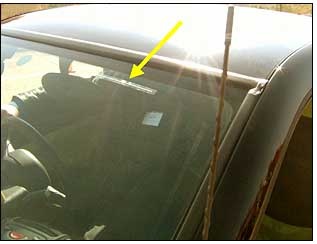Aug 09, 2004South African RFID chip and reader design firm iPico Holdings announced the commercial availability of its Electronic Number Plate (ENP) RFID technology. The company says its technology is already being deployed in a pilot in South America.
IPico’s new UHF ENP technology uses the company’s existing EM4222 passive chip design already used for supply chain management and tire-tagging applications. For its ENP system, however, the company redesigned the tag so it could be attached to the inside of a vehicle’s windshield and developed readers for roadside placement.
Using RFID in electronic vehicle identification promises to support a range of applications both for government and local authorities and for businesses. The technology is being considered for electronic vehicle licensing, traffic, speed and cross-border control and traffic ticketing, as well as for existing operations such as road toll collection and fleet and parking management.
According to iPico, car makers have indicated a desire for its technology “Various motor manufacturers in South Africa, Australia and Europe have shown interest in both supply chain and in manufacturing, process control and services record applications [tracking the service history or a vehicle],” says Luther Erasmus CEO of iPico, which is based in Pretoria.
iPico’s ENP tag operates in the UHF band between 860 MHz and 960 MHz. Its read-only memory is factory programmed with a unique 64-bit ID. Once attached to a windshield by means of its self-adhesive backing, the tag will become destroyed if anyone tries to remove it.
The company maintains that when used with its readers, the ENP tag can be read at distances that allow readers to be placed at the roadside or on bridges over roads. In July, the company demonstrated the technology at an automotive test track operated by Gerotek Test Facilities in Pretoria. Four Smart cars, a DaimlerChrysler line of very small vehicles sold in South Africa as well as in Europe and Asia, were each fitted with two ENP tags to simulate eight vehicles. The system was tested as the cars drove closely together at both at low speed (80 kph, or 50 mph) and high speed (120 kph, or 75 mph), says iPico, and all the tags were read each time they passed roadside readers. In addition, an ENP tag placed on the inside windshield of a Mercedes Benz C55 model was also succesfully read while the car traveled at speeds in excess of 250 kph (160 mph).
According to the company, its system can read up to 200 tags per second; on a continuous basis, the system can read an average of 7,200 tags per minute. These volumes can be read either by a single reader, by a single reader that has an array of up to four antennas, or by multiple readers in close proximity (say four readers covering four lanes of a highway) that are connected with iPico’s DIMI (Device Information & Management Interface) middleware platform. The company does not anticipate that any application involving its tag would require a reading the ability to read more than 100 tags per second, or 6,000 tags per minute.
The iPico UHF RFID readers used in the demonstration were placed 2 meters (6.5 feet) from the road for the side reads. An overhead clearance of 5.2 meters (17 feet) was allowed for mounting readers on bridges.
IPico reports that the demonstration was attended by representatives from a number of South African government organizations, including the National Department of Transport and vehicle crime and border police divisions of the South African Police Services .
The company also says that its ENP system is being tested in a pilot deployment in South America. “We have already deployed on a state level, and a national deployment will be determined on the success of that current project. Deployment has already started with 5 million tags ordered, and the first batches already delivered,” says Erasmus.
ENP readers are likely to be priced around US$1,000, depending on volume and on the housing design selected by the customer. The company also sells OEM reader modules—RFID readers without antennas or the final housing—for below US$1,000 each.
By using what are basically the same chips iPico offers for other applications, the company says that it expects the windshield ENP tags to eventually cost less the 50 U.S. cents each. “We already ship at prices below 60 U.S. cents for a volume of 5 million. For orders of 20 million or more, prices will be below 50 U.S. cents,” says Erasmus.
In September, the company plans to offer a 1-kbit read-write version that has 16 pages of WORM (write once read many) and/or OTP (one-time programmable) EEPROM memory; although the EEPROM memory would not be accessible at vehicle speeds greater than 60 kph, or 40 mph. In 2005 iPico will launch a 256-bit WORM tag that can be read at long range and high speed (180 kph, or 120 mph).
Because the ENP tags are tamper proof, they could eventually be used for antitheft applications, although iPico would not be the first company to offer such a solution (see Smart License May Cut Car Theft). The company says it plans to use either the 1-kbit read-write tag or the 256-bit WORM tag to also write the vehicle identification number, registration and/or owner detail to the tag, which will, together with the unique ID and iPico proprietary asymmetric encryption techniques, enable a 100 percent secure antitheft solution.


